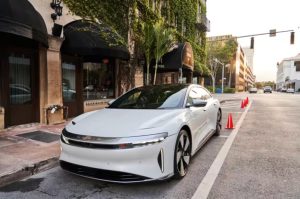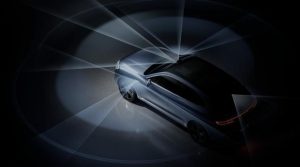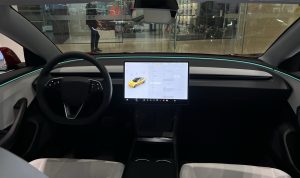China’s Electric Vehicle Storm Sweeps Through Munich
9 min read
China’s presence at the Munich Motor Show highlights the profound changes taking place in the global automotive industry, with Chinese automakers making significant strides in electric and smart vehicles. With 50 Chinese automotive companies participating, twice as many as the previous edition, this year’s Munich Motor Show witnessed an unprecedented scale of Chinese participation.
Chinese automakers have been participating in top international auto shows for nearly two decades, initially focusing on raising brand awareness and benefiting the domestic market. However, the rapid transformation and electrification of the automotive industry, coupled with the saturation of the domestic market, have prompted Chinese automakers to expand internationally. In 2022, China exported 3.11 million vehicles, second only to Japan, and in the first half of this year, China exported 2.34 million vehicles, a year-on-year increase of 76.9%, surpassing Japan to become the world’s top exporter.
Moreover, Chinese automakers are increasingly targeting developed markets in Europe, North America, and Japan. According to data from Inovev, 8% of new electric cars sold in Europe this year are manufactured by Chinese brands, up 2 percentage points from last year. An Allianz Insurance study predicts that by 2025, at least 11 new Chinese electric cars will be launched in Europe.
The increase in China’s automotive exports, especially in the new energy vehicle segment, has played a significant role in this expansion. In the first half of this year, China’s exports of new energy vehicles reached 534,000 units, a year-on-year increase of 160%. Key components such as power batteries are also experiencing rapid export growth.
Zhang Xiang, the director of the New Energy Automotive Technology Research Institute at Jiangxi New Energy Technology Vocational College, noted that Europe still offers significant subsidies for new energy vehicles, while China’s subsidies are gradually decreasing. Therefore, the European market represents a breakthrough opportunity for Chinese automakers, especially for those struggling in the domestic market.
In summary, the Munich Motor Show reflects China’s growing influence in the global automotive industry, driven by the rapid development of new energy vehicles and the pursuit of international expansion by Chinese automakers. The show is a significant opportunity for Chinese companies to showcase their products and innovations to a global audience.

MG Cyberster
The MG4 Electric XPOWER is a high-performance version of the MG4 Electric, boasting a 0-100 km/h acceleration time of 3.8 seconds. The prototype, MG4 Electric, serves as SAIC’s pioneer in entering the European market, with cumulative sales exceeding 40,000 units in Europe in the first seven months of this year.
The midsize electric SUV Marvel R is positioned as an intelligent connected vehicle, equipped with the iSMART connectivity system, and accelerates from 0 to 100 km/h in 4.9 seconds.
Europe is the largest overseas regional market for SAIC Group. In the first seven months of this year, SAIC MG’s sales in Europe reached 135,000 units, a year-on-year increase of 148%, ranking at the top of the list in terms of new car sales in developed countries such as the UK, Germany, France, and Italy. SAIC stated that the three electric vehicles showcased at the Munich Auto Show are the main models for its current and future European market campaigns.
This year, SAIC’s overseas sales are expected to reach 1.2 million units, with Europe becoming SAIC’s first overseas regional market with sales exceeding 200,000 units.
BYD
As the world’s largest manufacturer of new energy vehicles and the newly crowned champion in Chinese vehicle sales, BYD displayed a total of six new energy vehicle models. Among them, the SEAL U (not derived from the Sea Lion model, but the overseas version of the Song PLUS Champion Edition) and the high-end MPV Tang D9 pure electric version made their debut in Europe.
On the other hand, the Sea Lion has officially launched in Europe with a price range of €44,900 (approximately CNY 353,000) to €50,990 (approximately CNY 400,000), roughly double the price compared to the domestic market.

BYD’s Crowded Booth
In addition, BYD showcased various models in Munich, including the Dolphin, ATTO 3 (known as Yuan PLUS), Dolphin, and Han, among others. The Dolphin, for instance, began shipping to Europe in June with a starting price of €29,990 (approximately CNY 235,000).
Apart from complete vehicle products, as one of China’s major suppliers of electric vehicle (EV) core technologies, BYD also exhibited CTB (Cell-to-Body) integrated battery technology and the iTAC BYD Intelligent Torque Control System, highlighting their core technical innovations.
Dongfeng
Dongfeng Motors displayed four overseas models at the Munich Auto Show: the all-new hybrid flagship MPV, Thunder, Yacht, and T5, showcasing a range of hybrid and pure electric powertrain technologies.

Dongfeng Fengxing Booth
Among these, the flagship MPV is equipped with the Fengxing Mach Super Hybrid powertrain, boasting a thermal efficiency of 45.18%.
Furthermore, Dongfeng Motors revealed that they will launch their first pure electric sedan, which will feature the all-new pure electric architecture platform from Dongfeng Fengxing and the Karmor 2.0 battery.
Avita
At the Munich Auto Show, Changan Automobile’s premium electric vehicle brand, Avita, unveiled its second model, the Avita 12, which is also its first sedan. The new vehicle is set to be delivered in China in the fourth quarter of this year and overseas markets next year.
The Avita 12 is positioned as a mid-large-sized new energy sedan and was designed by the Avita Global Design Center located in Munich, Germany. It has dimensions of 5020mm in length, 1999mm in width, 1450mm in height, and a wheelbase of 3020mm, surpassing the first model, the Avita 11.

Avita 12 Makes its Debut at the Munich Auto Show
The Avita 12 is built on Changan Automobile, Huawei, and CATL’s CHN Smart Electric Vehicle Technology Platform. It features Harmony OS 4.0 and is equipped with Huawei’s advanced intelligent driving system ADS 2.0.
In terms of power, the Avita 12 four-wheel-drive models are equipped with Huawei’s DriveONE dual-motor system, with maximum power outputs of 195 kW for the front motor and 230 kW for the rear motor. The single-motor model has a maximum power output of 230 kW. The Avita 12 is powered by CATL’s ternary lithium battery pack.
XPeng (Xiaopeng)
XPeng, making its debut at the Munich Auto Show, showcased the P7i and G9 models.

XPeng Motors Booth
During the auto show, He Xiaopeng, Vice Chairman and President of XPeng Motors, stated that XPeng plans to enter the German market in 2024. Markus Schrick, head of XPeng Motors Germany, also mentioned that XPeng plans to sell its vehicles in Germany through traditional dealerships and is in talks with several large chain stores. By the end of this year, XPeng expects to have 17 stores in Europe and 15 service centers.
Eric Xu, Vice President of International Markets at XPeng Motors, also stated that France will be added to XPeng’s new markets next year, and the UK market is also under consideration.
Zeekr (Lingzhi)
Zeekr, an electric vehicle brand under Geely, unveiled its first global product, the Zeekr C10, at the Munich Auto Show. The Zeekr C10 is positioned as a midsize SUV and will offer extended-range and pure electric dual-power options, including both five-seat and six-seat versions.

Zero Run C10
Over the next two years, Zero Run plans to introduce five globally oriented new products to meet the demands of both left-hand and right-hand drive markets. These products will be marketed in the four major global regions: Europe, Asia-Pacific, the Middle East, and the Americas.
Zero Run also announced its intention to offer four types of technology output business cooperation models to its global partners.
Seres
Seres showcased models including Seres 3, Seres 5, and Seres 7 at the Munich Auto Show, with Seres 5 and Seres 7 representing overseas versions of the Wuling M5 and Wuling M7, respectively.
In addition to automotive manufacturers, approximately 40 Chinese companies from the upstream supply chain also participated in the Munich Auto Show. These included power battery suppliers such as CATL, EVE Energy, Xinwangda, and Contemporary Amperex Technology (CATL), as well as automotive intelligent hardware and software suppliers like Horizon Robotics, HiScene, QCraft, and SenseTime.
02 “Chinese Brands Going Global” and “Reverse Joint Ventures”
Chinese automotive companies made an unprecedented entrance into the Munich Auto Show, sparking significant attention and even alertness among observers in the European and American automotive industries.
Dr. Dudenhöffer, Director of the Duisburg Institute for Automotive Research in Germany, mentioned that for Chinese electric vehicle companies, Europe is becoming an attractive market. Meanwhile, for German automakers, the competition is expected to intensify.
Renault CEO Luca de Meo expressed that Europe must narrow the cost gap with Chinese automakers. He emphasized that China has “led Europe by a generation” in the electric vehicle value chain, and European automakers must quickly catch up.
Stellantis CEO Carlos Tavares, on the other hand, bluntly stated that low-cost Chinese electric vehicles are “invading” Europe.
“China has the largest industrial chain for new energy vehicles, which leads to lower manufacturing costs and higher cost-effectiveness,” explained Zhang Xiang. Furthermore, China’s automotive intelligence level, including human-machine interaction, voice recognition, and driver assistance capabilities, surpasses that of European competitors.
What’s even more intriguing is that many European automotive giants, on their home turf, talked extensively about the significance of the Chinese market for their companies and industries. For instance, Volkswagen in its presentation at the auto show stated, “In China, for China,” and devoted a substantial portion of its presentation to the company’s China strategy.
“There is no doubt that China’s rapid development in the field of electrification is driving a global industry transformation,” said Stephan Wöllenstein, CEO of Volkswagen Group China. He emphasized that Volkswagen needs to empower itself to optimize services, technology, and products more quickly to meet the diverse needs of Chinese customers.

Volkswagen Highlights “In China, For China” at Munich Auto Show
The objective reality is that as electrification and smart technologies become consensus trends in the automotive industry, China has already been the world’s largest new energy vehicle market for eight consecutive years. In the first half of this year, China’s new energy vehicle sales reached 3.75 million units, a year-on-year increase of 44%, accounting for over 60% of global sales.
For many European carmakers such as Volkswagen, Mercedes-Benz, and BMW, the Chinese automotive market has long been their largest single global market, contributing to more than one-third of their sales revenue. However, with China’s new energy vehicle penetration rate exceeding 30% and the rise of numerous domestic new energy brands, the market share of traditional European gasoline cars in China is gradually eroding. Additionally, the highly competitive nature of the Chinese automotive market has prompted Chinese brands to seek new avenues of growth, including overseas markets like Europe.
Nevertheless, Chinese automotive brands still face the challenge of low brand recognition compared to international automotive giants. According to Zhang Xiang, the massive participation of Chinese automakers in auto shows can help European consumers become familiar with Chinese brands and increase media coverage of Chinese brands in Europe, which will be beneficial for increasing Chinese car exports to Europe in the future.
It’s worth noting that the European automotive market, known for its closed and conservative nature, has historically been difficult for American and Japanese automakers to penetrate, with generally poor market performance. Now, the challenge has come to Chinese automakers.
“Chinese automakers have the opportunity to break through the barriers of the European market,” says Zhang Xiang. In the era of gasoline cars, American and Japanese cars were not significantly different from European cars, with small size and fuel efficiency as their main product characteristics. They competed with each other while being mutually exclusive. However, as Chinese automakers enter the European market with new energy products, they have a significant advantage over European competitors in electrification and smart technology, making them the ones to be chased and learned from.
In recent years, “reverse joint ventures” have become a new trend in the Chinese automotive market. First, Toyota partnered with BYD to use BYD’s three-electric technology for manufacturing. Then, Volvo collaborated with Geely on the SEA architecture for producing electric vehicles. This year, Volkswagen invested in XPeng to enhance its software and smart driving capabilities. Audi, after facing production challenges with the PPE platform, turned to its long-term partner SAIC Motor for cooperation on electric platforms.

After Volkswagen’s investment in XPeng, Volkswagen China CEO Birgit Behrendt shared a photo with XPeng’s founder, He Xiaopeng, on Weibo.
“Volkswagen’s investment in XPeng and Audi’s purchase of SAIC’s platform show that Chinese cars and European cars are complementary, which is different from Japanese cars,” Zhang Xiang stated. He emphasized that if based on fair market competition, Chinese automakers have the opportunity to gain a foothold in Europe.
In the process of “Chinese brands going global” and “reverse joint ventures,” Chinese car companies are gradually transitioning from learners and contract manufacturers for foreign automotive giants to leaders in electrification and advanced smart technologies. China is moving from being a major automotive nation to becoming a strong automotive nation with a firm and steady pace.
The Munich Auto Show, where Chinese car companies have made a significant impact, is just the beginning. “The key is not to have other factors interfere, such as trade wars,” Zhang Xiang added.



